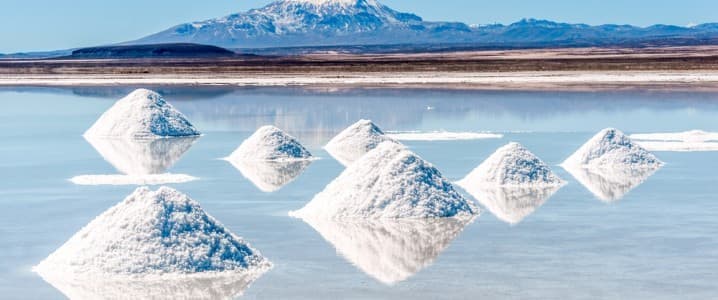
Big Oil is quietly investing in the renewable revolution – not through solar and wind power, but through lithium. The ‘white gold’ is an essential ingredient in a laundry list of clean energy technology components, most notably the lithium-ion batteries used in electrical vehicles and for short-term energy storage – an essential stop-gap for variable renewable energy production.
Just last month, ExxonMobil inked a preliminary deal to provide lithium to South Korean electric vehicle battery manufacturer sk On. Just months before that, the firm began drilling for lithium extraction in Arkansas. And according to Exxon insiders, this is just the beginning. ExxonMobil’s Dan Holton recently told the Economist that a “material” part of the $20 billion that the oil supermajor has earmarked for low-carbon investments between 2022 and 2027 will go directly to the lithium sector. “By 2030 the company hopes to produce enough lithium to supply 1m electric vehicles a year,” the Economist reports.
Though lithium prices have stumbled lately, this dip hasn’t seemed to spook investors, as lithium is expected to generate high rates of return for its investors as clean energy manufacturing giants around the world scramble to shore up supply chains while the green energy transition heats up. The International Renewable Energy Agency (IRENA) estimates that lithium demand for battery-making alone is expected to increase by a factor of ten over the decade between 2020 and 2030. A 2023 report from Popular Mechanics calculated that “an electrified economy in 2030 will likely need anywhere from 250,000 to 450,000 tonnes of lithium.” To put that sum in perspective, “In 2021, the world produced only 105—not 105,000—tonnes.”
Politics aside – money talks. And whether or not Big Oil is ready to give up the ghost of fossil fuels, they are ready to jump into the deep end of lithium production. “What we’re seeing right now in lithium is the sentiment is bearish,” Exxon’s Lithium Global Business Manager, Patrick Howarth, told Bloomberg in an interview on the sidelines of the Fastmarkets Lithium Supply and Battery Raw Materials Conference in Las Vegas. “We know the world urgently needs significantly more lithium than it’s producing today.”
As such, companies are looking to get into lithium from a number of angles, including opening up new mines, extracting the valuable element from the oil and gas industry’s wastewater, and squeezing more revenue out of lands already owned by these firms where oil and gas have long since run dry.
Putting the formidable weight of Big Oil behind lithium production in the West could have major implications for global clean energy markets. Currently, the market is all-but monopolized by China. Beijing alone controlled nearly ten percent of global lithium reserves and a whopping 72% of lithium refining capacity as of 2022. And Xi Jinping’s government is hard at work inking more and more lithium supply deals in emerging countries around the world, and in South America’s so-called ‘lithium triangle’ in particular.
The United States has been trying to break into the South American lithium market for years now, but has hit significant hurdles posed by China’s already considerable presence and mistrust of dealmaking with the United States. The United States government has also put considerable funds into ramping up domestic lithium production, notably in Utah. Indeed, the Biden administration has offered more than $407 million for domestic exploration and production of lithium through the Inflation Reduction Act. But there is still only one functioning lithium mine in the country, and other prospective projects are still fledgling and woefully inadequate to stand up to China any time soon.
But if oil supermajors, with all of their bargaining power, deep pockets, and long arms of corporate influence, get increasingly involved in lithium production in the United States, this could provide the West with a much more even playing field in the clean energy competition with China.
